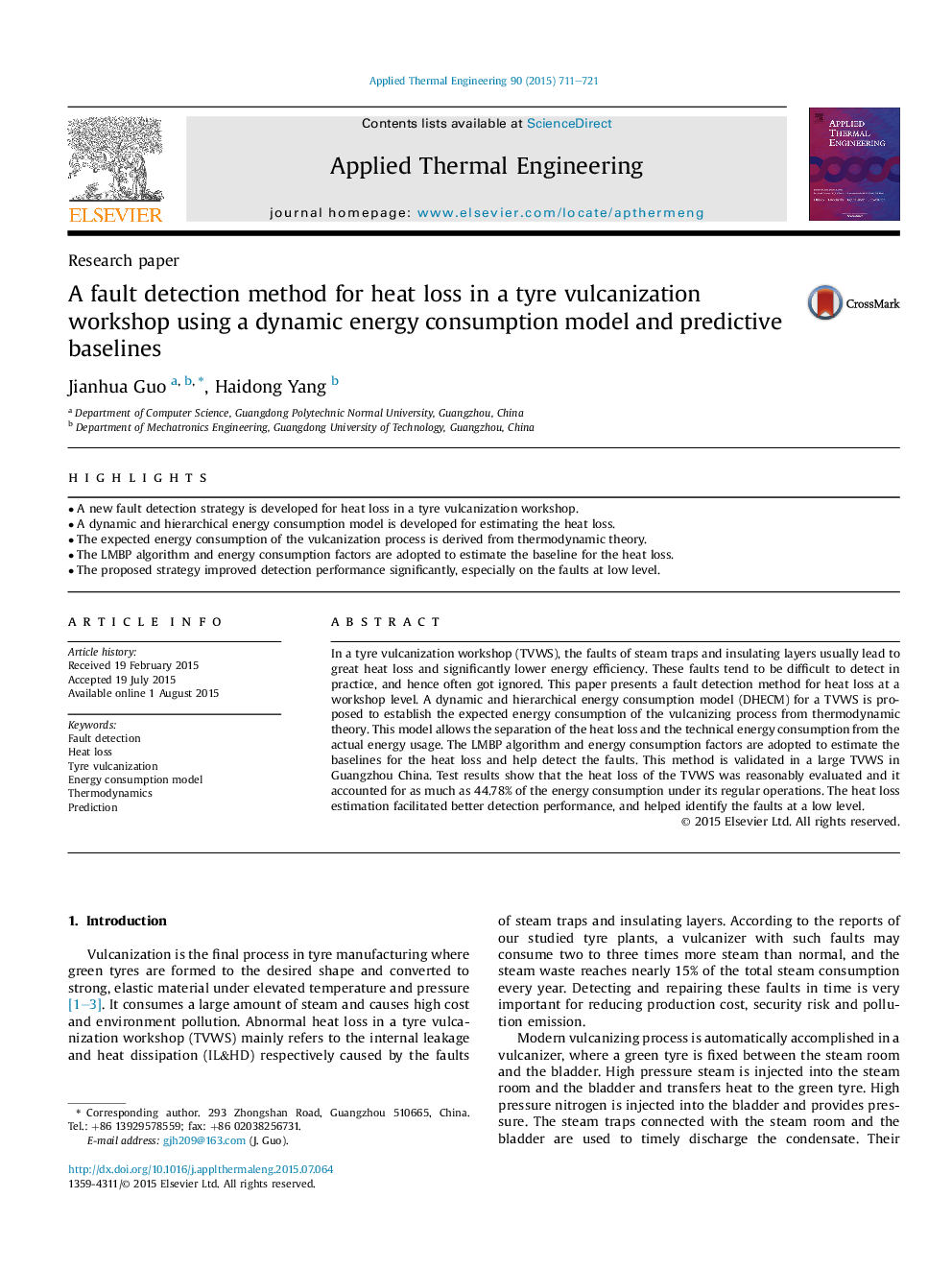| Article ID | Journal | Published Year | Pages | File Type |
|---|---|---|---|---|
| 7048880 | Applied Thermal Engineering | 2015 | 11 Pages |
Abstract
In a tyre vulcanization workshop (TVWS), the faults of steam traps and insulating layers usually lead to great heat loss and significantly lower energy efficiency. These faults tend to be difficult to detect in practice, and hence often got ignored. This paper presents a fault detection method for heat loss at a workshop level. A dynamic and hierarchical energy consumption model (DHECM) for a TVWS is proposed to establish the expected energy consumption of the vulcanizing process from thermodynamic theory. This model allows the separation of the heat loss and the technical energy consumption from the actual energy usage. The LMBP algorithm and energy consumption factors are adopted to estimate the baselines for the heat loss and help detect the faults. This method is validated in a large TVWS in Guangzhou China. Test results show that the heat loss of the TVWS was reasonably evaluated and it accounted for as much as 44.78% of the energy consumption under its regular operations. The heat loss estimation facilitated better detection performance, and helped identify the faults at a low level.
Related Topics
Physical Sciences and Engineering
Chemical Engineering
Fluid Flow and Transfer Processes
Authors
Jianhua Guo, Haidong Yang,
